Fredneck
Full Member
- May 7, 2005
- 241
- 552
- Detector(s) used
- GPX 5000, ORX, White's XLT, AT Gold for Fresh Water
Digging an early site that's producing relics from 1620's to the Civil War period. While detecting on the first visit there I had tapped into an early pit/privy and finally was able to investigate it a little more after a good pounding of the site surface detecting. I dug the mold of an American Large Cent and the bores tusk from the pit, along with lots of glass, china, crockery pieces, and some interesting iron relics not in the post.The mold may be made of pewter and explain why we can't find any old coins at the site lol.
The other cool piece I dug is a very early little copper mouth harp while surface detecting, that references date from way back, maybe earlier than the 1620's horse stirrup from a couple weeks back on the first visit. I pic'd it with the typical harp we find at CW and home sites.
Hoping the other side of the coin mold is still in the unfinished hole, which I now believe is a rock lined privy, just feet behind the old footprint of the house. To be continued ...
**** Added 2 pics showing its not flat and whats left of the raised border, that got me thinking cast mold *****
The other cool piece I dug is a very early little copper mouth harp while surface detecting, that references date from way back, maybe earlier than the 1620's horse stirrup from a couple weeks back on the first visit. I pic'd it with the typical harp we find at CW and home sites.
Hoping the other side of the coin mold is still in the unfinished hole, which I now believe is a rock lined privy, just feet behind the old footprint of the house. To be continued ...
**** Added 2 pics showing its not flat and whats left of the raised border, that got me thinking cast mold *****
Attachments
-
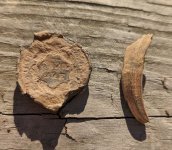 PXL_20231112_193440628_2.jpg174.8 KB · Views: 213
PXL_20231112_193440628_2.jpg174.8 KB · Views: 213 -
 PXL_20231025_200856014_2.jpg154 KB · Views: 147
PXL_20231025_200856014_2.jpg154 KB · Views: 147 -
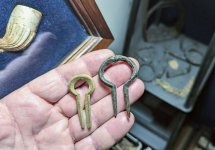 PXL_20231030_015957530_4.jpg74.8 KB · Views: 164
PXL_20231030_015957530_4.jpg74.8 KB · Views: 164 -
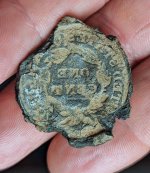 PXL_20231113_010148164_4.jpg304.1 KB · Views: 159
PXL_20231113_010148164_4.jpg304.1 KB · Views: 159 -
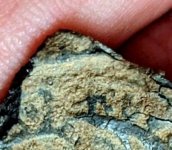 PXL_20231113_010148164_4 (1).jpg35.3 KB · Views: 33
PXL_20231113_010148164_4 (1).jpg35.3 KB · Views: 33 -
 PXL_20231113_010148164_4 (2).jpg32.1 KB · Views: 27
PXL_20231113_010148164_4 (2).jpg32.1 KB · Views: 27
Last edited:
Upvote
27



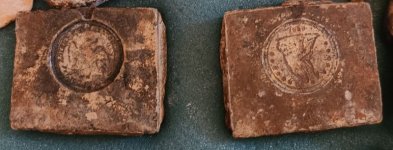

 HMMMM......
HMMMM......
